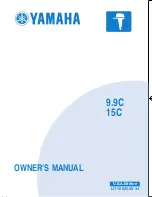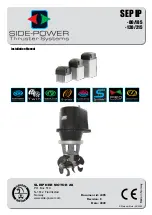
Chapter 2
Poly-fuse Over Current Protection
The poly-fuse protects the system from dangerous voltages that the system
might be exposed to via the keyboard or USB connector. In case of such
exposure, the poly-fuse will immediately be disconnected from the circuit, just
like a normal fuse. After being disconnected for a certain period of time, the
poly-fuse will return to its normal state. Then the keyboard or USB connector
can function properly again. Unlike conventional fuses, the poly-fuse does not
have to be replaced, relieving the user wasted time and inconvenience.
CN1A (Front Panel Connector) A through F
A. PWR-SW (Over-ride Power Button Connector)
The power button on the ATX chassis can be used as a normal power switch
as well as a device to activate Advanced Power Management Suspend mode.
This mode is used for saving electricity when the computer is not in use for
long periods of time. The Soft-OFF by PWR-BTN function in BIOS's Power
Management Setup menu must be set to [
Delay 4 Sec
.] to activate this
function.
When the Soft-OFF by PWR-BTN function is enabled, pushing the power
button rapidly will switch the system to Suspend mode. Any occurrence of
external activities such as pressing a key on the keyboard or moving the mouse
will bring the system back to Full-On. Pushing the button while in Full-On
mode for more than [
4 seconds
] will switch the system completely off. See
Over-ride Power Button Operation diagram.
B. P-LED (Power LED Connector)
11
The power indicator LED shows the system's power status. It is important to
Summary of Contents for 7NJL3
Page 7: ...Chapter 1 1 3 7NJL3 Motherboard Layout 3...
Page 41: ...Chapter 4 3 Please select OK to continue 4 Please select Finish to restart your computer 37...
Page 43: ...Chapter 4 3 Please select Next to continue 4 Please select Next to continue 39...
Page 44: ...Chapter 4 5 Please select Next to continue 6 Please select Continue Anyway to continue 40...
Page 47: ...Chapter 5 Chapter 5 C Media 3D Audio Configuration 5 1 Speaker Out 1 Earphone 43...
Page 48: ...Chapter 5 2 Two Channel 44...
Page 49: ...Chapter 5 3 Four Channel 45...
Page 50: ...Chapter 5 4 Six Channel 46...
Page 51: ...Chapter 5 5 2 S PDIF 1 S PDIF Out Source Format 5 3 Volume Control 47...















































